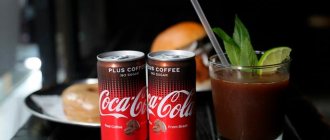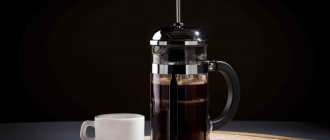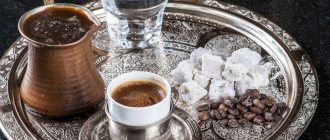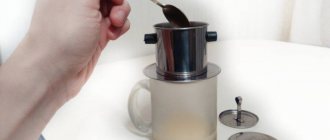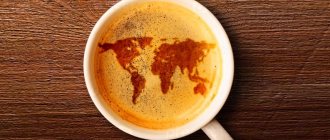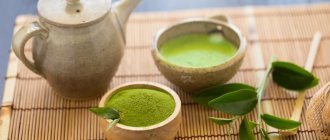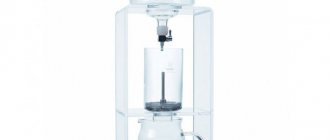How much sugar is in cola?
The high sugar content in cola - about 6 teaspoons per can - is one of the key secrets to the success of Coca-Cola and Pepsi. The second important ingredient in the composition is caffeine, which is found not only in cola, but also in drinks such as Sprite and Mirinda. However, the reason why people like to drink these drinks is not because of the sugar or caffeine content. In fact, carbonated and chilled cola does not remove thirst at all, but only provokes it.
The sugar, caffeine and mineral salts in cola provoke dehydration, causing the brain to send a signal that it needs additional fluid - and the more cola a person drinks, the more thirsty he becomes. Also, the habit of experiencing the invigorating effect of a combination of fast carbohydrates and caffeine definitely plays a role in the formation of addiction to soda.
Caffeine content in cola
Almost all carbonated drinks contain caffeine. The leader in its content is Mountain Dew. In the material about how much caffeine is in coffee, we mentioned that it contains about 50-55 mg of caffeine in a standard can (350 ml), which is comparable to a serving of espresso. Most colas (regular Coca-Cola or Pepsi, Coca-Cola Zero, Coca-Cola Light, Pepsi Zero) contain about 35-40 mg of caffeine per 350 ml (above standard can) (1).
Unfortunately, legislation in most countries does not require the exact caffeine content of carbonated drinks to be specified, so accurate information is not available to the consumer. At the same time, manufacturing companies do not provide any explanation for the presence of caffeine in drinks - it cannot affect the taste, and its presence in the composition only indicates a desire to increase dependence on cola.
Cola addiction
Scientific research shows that both children and adults are extremely sensitive to sweet tastes - essentially, they like foods that contain 25-40% sugar(2). Surprisingly, carbonated drinks have just the right level of sweetness and sugar content that people like. Apparently, this is precisely what forms the basis for the formation of addiction to cola and the habit of drinking sweet soda with every meal.
The desire of manufacturing companies to create an association between drinking cola and pleasant moments is clearly visible in advertising, when people drinking soda literally glow with joy and pleasure. For decades, the Coca-Cola Company has been actively working to create a lasting connection between the New Year's holiday and the mandatory purchase of cola.
How to counteract a caffeine overdose
Excessive consumption of caffeine poses a risk of poisoning. The consequences of an overdose can be very serious. List of signs of overdose:
- impaired coordination;
- excessive overstimulation;
- visual and hearing impairment;
- nausea, vomiting;
- confusion, hallucinations;
- rapid pulse, which after a while can turn into a rare one;
- blueness of the skin;
- breathing problems, suffocation;
- sleep disturbance, irritability;
- headache;
- temperature increase.
If such symptoms are found, you should definitely call a doctor. Poisoning can be caused not only by food or drinks, but also by medications or dietary supplements. The symptoms of poisoning are identical.
If you have symptoms of a caffeine overdose, it is better to call a doctor.
Before the ambulance arrives, a person poisoned by caffeine must be given first aid:
- take the victim out into the fresh air, unfasten clothes, belts, ties, anything that may impede the access of oxygen;
- perform gastric lavage. If there is a gag reflex, it cannot be restrained. The body thus gets rid of toxins;
- create peace for the poisoned person.
Afterwards, the victim should be handed over to doctors, further actions should be carried out within the walls of a medical institution.
What is cola made from?
Typical cola ingredients include purified tap water, sugar (or sugar analogs such as high fructose corn syrup), sugar coloring, caffeine, phosphoric acid, coca extract, kola nut extract, lemon extract, vanilla, and glycerin. . Instead of sugar, Diet Coke contains sweeteners (most often, aspartame).
Classic Coca-Cola and Pepsi also contain natural flavors obtained by mixing lemon, orange and other oils. However, the exact list of ingredients from which cola is made is considered a technological secret and is not disclosed. Sometimes the press gets information that strange ingredients are found in the composition - for example, particles of insect shells used as a dark dye.
Diet Coke
It is widely known that the growth rate of soda sales in the United States is almost identical to that of the obesity epidemic(4). In other words, the more sweet cola people drink, the faster they gain weight - and the role is not played by the high calorie content of the drinks, but by the fact that the fast carbohydrates included in cola literally whet the appetite. In addition, the sugar content of cola is higher than that of most fruit juices.
In response to criticism, manufacturing companies have released diet and low-calorie versions of drinks, replacing sugar (or even more harmful fructose syrup) with sweeteners. However, growing evidence suggests that sweeteners trick the brain into craving regular sugar, resulting in extra calories from sources other than Diet Coke.
Bibliography:
Energetic drinks. Safe doses of energy drinks. Where is there more caffeine - in a cup of tea or coffee? Tea vs coffee: which contains more caffeine? 15 foods that contain caffeine. Where is there more caffeine: in coffee, tea or cocoa. Skip to navigation Skip to search
—
- a sign, symbol, dash on a regular computer keyboard.
Officially, the symbol is called "hyphen-minus", used primarily to indicate a hyphen. Similar symbols:
- Minus (−) is a mathematical symbol.
- The em dash (–) is used in Anglo-American typography to indicate time intervals (for example, 1941–1945)[1].
- Em dash (—).
- Digital dash (‒) - used to separate digits of a phone number.
- Horizontal line (-).
How much cola can you drink a day?
Average soda consumption in the United States has doubled over the past thirty years, peaking at 500 ml per person per day in the late nineties(4). Moreover, in some states the average person drank more than one liter of cola per day. At the same time, we are talking about the average figure - if you do not take into account people who do not drink soda at all, the figure will be significantly higher.
We can say with 100% confidence that daily consumption of cola in such quantities has a negative impact on health - from the destruction of tooth enamel and stomach problems to the development of obesity. Naturally, nutritionists do not give recommendations on how much cola you can drink per day, but recommend completely eliminating any type of soda from your diet.
Is Coca-Cola an evil company?
Naturally, companies such as Coca-Cola or PepsiCo do not have a stated goal in their charter to deliberately spoil people’s health and provoke mass obesity. The high sugar and caffeine content in drinks is due solely to the fact that this is the taste that people like most and this is the product they want to buy. In the end, it all comes down to maximizing profits.
Unfortunately, the main goal of these companies is based on creating loyal consumers (so-called “heavy users”) - those who drink more than two cans of cola a day. More than 80% of all soda sales come from them(3). It is also important that the formation of the habit of constantly drinking cola begins in childhood - and that is why it is better not to give it to children at all.
Sports drinks and isotonics - a new market
To boost sales, Coca-Cola partnered with McDonald's in the 1980s, making the combination of cola and fast food an industry standard. This was followed by an emphasis on small neighborhood stores - in the USA they were often bought out only in order to compete with competitor brands (2). The main priority in recent years has been sweet juice, bottled sugar tea and sports drinks.
Unlimited advertising budgets are spent on promoting the fact that athletes definitely need isotonic drinks Powerade or Gatorade - products of the same Coca-Cola Company and PepsiCo. Despite the fact that sports doctors and nutritionists constantly remind that the only difference between Powerade and cola is the taste and lack of gas, simply no one listens to them.
***
The secret to the success of cola is a composition that does not remove thirst at all, but only provokes it, forcing you to drink more. The question of whether the composition contains sugar or a sweetener plays a secondary role - ultimately, drinking any soda is incompatible with weight loss, since it almost always provokes a person to consume excess carbohydrates.
Scientific sources:
- Caffeine Chart - Center for Science in the Public Interest, source
- How The Food Industry Manipulates Taste Buds, source
- Industry Studies, Edited by Larry L. Duetsch, source
- Effects of Soft Drink Consumption on Nutrition and Health, source
Permitted age
Major health organizations around the world, like the American Academy of Pediatrics, do not recommend that children under 12 years of age eat or drink any food or drink containing caffeine (including colas).
For children over 12 years of age, the permissible daily intake of this tonic should be no more than 85-100 mg. Until the age of 18, this restriction remains. This amount of caffeine is equivalent to about 1 cup of coffee, 1-2 cups of tea (the drink does not contain caffeine, but contains its natural analog tannin) or 2-3 cans of Coca-Cola or Pepsi.
How often can children have cocoa?
General information about sodas
The Coca-Cola drink was created back in 1885 by the then unknown John Pemberton in a pharmacy . The soda was designed to save people from morphine addiction. The original composition was quite simple and included only three components: cocaine, caffeine and wine. They also treated depression, headaches, male impotence and gastrointestinal disorders. The interesting ingredient cocaine was present in the drink right up until 1900.
Pepsi was created eight years later, in 1893 , it was conceived, like Coca-Cola, for medicinal purposes and was sold in pharmacies. The original name of the drink was “Brad's Drink” and only five years later the name was changed to what everyone knows to this day. It consisted of pepsin and nuts. The creator's idea was to increase productivity and increase energy.


